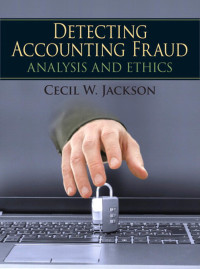Question
1. Which of the following explain why it is important to determine the period in which income is recognized? a. Marginal tax rates may be
1. Which of the following explain why it is important to determine the period in which income is recognized? a. Marginal tax rates may be different in different periods. b. Tax laws may change c. The time value of money d. All of the above are explanations e. a. and b. only are explanations 2. In May 2013, Stephen acquired a used automobile for $12,000 and used the automobile 75% for business. No Sec. 179 election was made. In 2014, Stephen's business use of the automobile decreases to 45%. As a result of this change in business use: a. The change does not affect the way Stephen computes his 2014 depreciation b. Stephen's depreciation in 2014 is $2,250. c. Stephen must recapture $900 as ordinary income in 2014 d. Stephen must amend the 2014 tax return and recompute depreciation. 3. Vero Corporation owns $200,000 of equipment used for its business and the building that the business is located in that is valued at $175,000. The business is successful and has investments in marketable securities valued at $45,000. What is the value of its capital assets? a. $45,000 b. $75,000 c. $275,000 d. $320,000 4. A sole shareholder receives a piece of land from a corporation as a dividend distribution. The land has a basis of $40,000 and a fair market value of $80,000; the shareholder?s basis in his stock is $20,000, and this distribution is the only corporate activity for the year except for paying any tax owed on the distribution. At the beginning of the year, the corporation had only $5,000 in accumulated earnings and profits. How will this distribution be treated for tax purposes by the shareholder? a. $80,000 dividend b. $39,000 dividend; $41,000 capital gain c. $39,000 dividend; $20,000 return of capital; $21,000 capital gain d. $60,000 dividend; $20,000 return of capital e. None of the above 5. Which of the following does not affect the basis of S corporation stock? a. Tax-exempt income b. Nondeductible expenses c. Charitable contributions d. Capital gains e. All affect stock basis 6. What is the difference in tax savings between a $1,000 tax credit and a $1,000 tax deduction for a single taxpayer with $45,000 in taxable income? a. 0 b. $850 c. $750 d. $300 e. $250 7. Maurice and Judy (both age 32) have one natural daughter, age 4, and adopted twin boys, age 8. Their adjusted gross income on their joint return is $120,000. If they take the standard deduction, what is their tax liability after any allowable tax credits in 2014? a. $14,375 b. $11,575 c. $11,175 d. $11,375 8. Stephanie and Cal have three dependent children in college. Sally is a freshman and Teri is a sophomore at a small private college in their town where their expenses are $6,500 per year for each student; Lexi is in her third year of medical school in Wisconsin and her related expenses are $12,500 per year. What is the maximum education credit allowed Stephanie and Cal on their joint tax return if their AGI is $118,000 in 2014? a. $5,000 b. $6,000 c. $7,000 d. $7,500 Short Answer Questions 1. William has decided to purchase a large apartment complex. He pays $100,000 cash, obtains a loan on the property for $500,000, and assumes the first mortgage balance of $250,000. He also gives the sellers $100,000 of marketable securities that he purchased three years ago for $125,000 and paid a finder?s fee of $5,000, legal fees of $6,000, and transfer taxes of $12,000. What is William?s acquisition basis for the building? Does he have any other tax consequences as a result of this purchase? 2. Continental Corporation has $1,000,000 in common stock and $1,000,000 in 7 percent 10-year bonds in its capital structure. How much does Continental save in taxes in current dollars over the 10 years the bonds are outstanding by having these bonds instead of an all-equity capital structure? Assume Continental has a 34 percent marginal tax rate in all years.
Step by Step Solution
There are 3 Steps involved in it
Step: 1

Get Instant Access to Expert-Tailored Solutions
See step-by-step solutions with expert insights and AI powered tools for academic success
Step: 2

Step: 3

Ace Your Homework with AI
Get the answers you need in no time with our AI-driven, step-by-step assistance
Get Started


